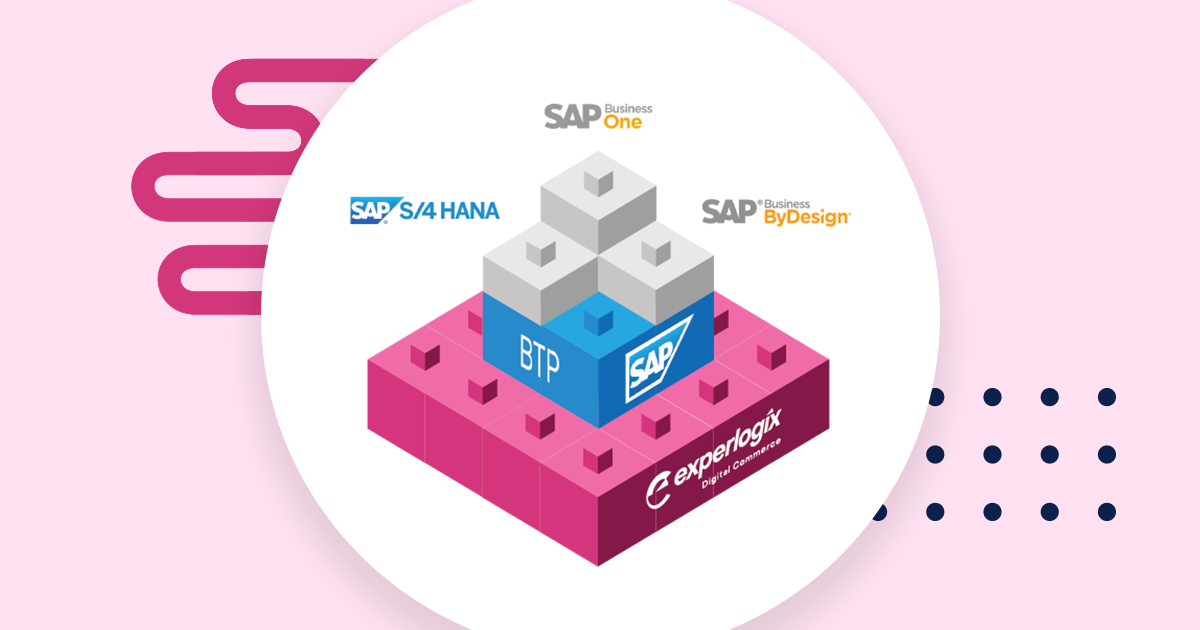The Ultimate Guide to Ecommerce and ERP Integration

Ecommerce businesses aren’t immune to growth challenges. Imagine a small online clothing store that suddenly goes viral on social media. Orders start pouring in, but the owner is overwhelmed trying to manually update inventory, process orders, and manage customer data across different systems. This scenario is all too common and can quickly lead to overselling, shipping delays, and unhappy customers.
This is where Enterprise Resource Planning (ERP) integration comes into play. By connecting your online store to an ERP system, you can create an automated ecosystem that handles the most repetitive tasks.
Here’s a quick checklist to determine if your ecommerce store is ready for ERP:
- Are you struggling to stay on top of inventory?
- Are customers ordering products, only to receive an email days later saying it’s out of stock?
- Are you manually entering orders from your online store into your backend system?
- Is customer and product data scattered across different systems?
- Are you struggling to scale because you have too many manual processes to stay on top of?
- Are customers frustrated with your support team because they don’t have the right information?
Why Integrate Ecommerce with ERP?
Here are some of the biggest benefits of integrating your ecommerce store with ERP.
Smooth Out the Daily Grind
Spending hours copying order details from your website into your accounting software is mind-numbing work and you can often mix up numbers or forget an order. It can lead to burnout and angry customers—not the recipe for a successful business.
With an ERP system, your store and your business software can talk to each other and automatically transfer data from one platform to another. This means your team can focus on strategic tasks rather than mundane administrative duties. The result? Quicker turnaround times and a more agile business operation, leading to better overall efficiency.
Keep Customers Coming Back
Happy customers are loyal customers. And with online shopping, where the competition is just a click away, keeping your customers coming back time and time again is the dream. In fact, returning customers spend 67% more than new customers. Connecting your online store to your business management system can really improve your customers’ shopping experience. Here’s how:
- Always accurate stock information. No more disappointed customers trying to buy items that are actually out of stock. Your website shows exactly what’s available, updated in real-time.
- Easy order tracking. Customers can see where their package is at every stage. This transparency builds trust and reduces anxious “Where’s my order?” emails.
- Faster responses. With all information in one place, you can answer customer questions quickly and accurately.
- Personalized service. When you have good data about your customers’ preferences and buying history, you can offer more tailored recommendations and reminders.
- Consistent information. Product details, prices, and availability are the same everywhere—on your website, in your warehouse, and in customer service records.
- Fewer mistakes. Automated processes mean less human error in orders, leading to happier customers.
Get a Grip On Your Stock
Managing inventory for an online store can be a real headache. Too little stock, and you miss out on sales. Too much, and your money is tied up in products gathering dust. Many digital commerce businesses struggle to find the right balance. But, with 60% of US shoppers claiming out-of-stock notices impact their shopping behavior, it’s worth addressing.
By connecting your online store to your business management system, you get a real-time view of your stock. This means:
- No more embarrassing “Sorry, we’re out of stock” messages to customers who just tried to buy something.
- You can reorder products at the right time before you run out.
- You’re not tying up all your cash in excess inventory.
- You can spot trends and predict what you’ll need in the future.
Good inventory management is about having the right products available when customers want them, without overspending on stock. It’s a balancing act that gets much easier when your systems work together. This way, you’re not just guessing—you’re making smart decisions based on real data.
Stop the Financial Headaches
Success isn’t just about making sales—it’s about understanding your numbers and using them to make your business stronger.
Without the right tools, you might find yourself struggling to figure out if you’re actually making money, panicking when it’s time for taxes because your numbers don’t add up, and missing out on opportunities because you can’t see the big picture.
Integrated systems provide a single source of truth for financial data, enabling businesses to generate accurate and timely financial reports. But they can also help you:
- See all your money in one place
- Know exactly how much you’re earning and spending in real-time
- Easily track which products are selling best and which are duds
- Have accurate numbers ready for tax time without the last-minute scramble
- Spot trends and make smart decisions about where to invest in your business
Good financial clarity isn’t just about keeping the taxman happy. It’s about understanding your business deeply so you can make it grow. When your systems talk to each other, you get a clear, accurate picture of your finances without all the manual work.
Grow Without the Growing Pains
Success can be a double-edged sword. As your online store takes off, you might find yourself drowning in orders, making mistakes as you rush to fulfill a flood of purchases, and losing track of inventory across different sales channels.
Many ecommerce owners hit a wall where their current setup just can’t handle more growth. But connecting your store to an ERP system can help you handle more orders without hiring new staff, expand into new online marketplaces, automate routine tasks, and adapt quickly when market trends change.
The right setup means your business can grow without everything falling apart. You won’t have to rebuild your processes from scratch every time you hit a new milestone.
Tackling the Challenges of An Ecommerce-ERP Integration
Let’s cover some of the common challenges ecommerce owners face when connecting their store to an ERP system and how you can overcome them.
Simplifying Data Integration
Combining data from different systems is a common struggle for both B2C and B2B ecommerce businesses. Making sure data flows smoothly between platforms can be a headache, especially when systems don’t easily connect. To make this process easier, businesses should:
- Choose compatible platforms. Select ecommerce and ERP systems that are designed to work together. This makes integration much simpler.
- Use middleware solutions. These tools act as a bridge, helping data move between platforms. They translate and transfer information, keeping it accurate and up-to-date in both systems.
By taking these steps, businesses can overcome data integration challenges and focus on growing their ecommerce operations.
Customizing to Fit Your Needs
Every business has unique needs, and standard integration solutions might not always be the perfect fit. Customizing integration processes is crucial to support your specific business model, but it can be challenging and requires expertise. Consider working with experienced partners and prioritizing customization so your integration adds value without unnecessary bells and whistles.
Managing Change Effectively
Introducing new systems and processes can be challenging, especially when employees are used to their current routines. To manage change effectively and ensure a successful transition, consider these strategies:
- Provide thorough training. Educate employees on the advantages and features of new systems. This helps them understand how the changes benefit both them and the business.
- Involve key stakeholders. Encourage participation from team members during planning and implementation. This fosters a sense of ownership and eases the transition.
Balancing Costs and Benefits
Implementing new systems can be expensive due to upfront costs for software, middleware, and services. However, the long-term benefits—like improved efficiency and scalability—often make the investment worthwhile.
Make sure you can justify the investment by performing a cost-benefit analysis to evaluate the potential return and allocating resources wisely.
7 Steps to Integrate Your Ecommerce Platform With ERP
- Set clear goals. The first step in any integration project is to clearly define your objectives. What are the specific goals you aim to achieve through the integration? Identifying key performance indicators (KPIs) to measure success will help guide the project and ensure that all stakeholders are aligned.
- Choose the right tools. Selecting the right eCommerce and ERP systems is critical. Make sure the platforms you choose are compatible and offer robust integration capabilities. Consider factors such as scalability, customization options, and vendor support to make sure systems can grow with your business.
- Plan thoroughly. Create a detailed project plan outlining tasks, timelines, and responsibilities. Get all stakeholders involved in the planning process and encourage clear communication throughout the project.
- Use middleware for flexibility. Using middleware or integration platforms can significantly reduce the complexity of data exchange between eCommerce and ERP systems. Middleware acts as an intermediary to accurately translate and transfer data between systems.
- Test before launch. Before going live, conduct extensive testing to identify and resolve any issues. Testing ensures that data synchronization and workflows function as they should, reducing the risk of disruptions once the systems are fully operational. Involving end-users in the testing phase can also provide valuable feedback and help address any concerns early on.
- Train your team. Training employees on new systems and processes is crucial for successful adoption. Comprehensive training programs should cover all aspects of the integrated systems, from basic functionalities to advanced features. Addressing any concerns and providing ongoing support will help employees feel confident and capable of using the new systems.
- Monitor and optimize. Continuously monitor the integration to make sure it’s performing as best as possible. Gather feedback from users and make necessary adjustments to improve efficiency. Regularly reviewing and optimizing the integrated systems will help maintain their effectiveness and ensure that they continue to meet your business needs.
3 Real-World Ecommerce and ERP Success Stories
Check out how three brands thrived after integrating their stores with ERP.
1. How Fluiconnecto Reduced Service Inspections
Fluiconnecto, a leading service organization for high-pressure hoses and fluid connectors, integrated its eCommerce platform with ERP to streamline service inspections and analyses.
Before integration, their process took weeks and was prone to errors.
Post-integration, they reduced this time to just one week, significantly enhancing efficiency and reducing costs. The integration with Microsoft Dynamics 365 played a pivotal role in achieving these results.
2. How Trust Pet Products Improved Catalog Management
Trust Pet Products, a UK-based company, leveraged Experlogix’s Digital Commerce solutions to enhance their customer service and boost online turnover. By integrating their ecommerce platform with ERP, they improved product discovery and catalog management, leading to a more streamlined and efficient operation (Experlogix).
3. How FotoFinder Reduced Time-to-Quote
FotoFinder, a medical imaging company in Germany, integrated their eCommerce and ERP systems using Experlogix CPQ. This integration reduced their time-to-quote by over 90%, simplifying their complex pricing structures and significantly speeding up their sales process.
Looking Ahead: Future Trends in Ecommerce and ERP
What’s next for ecommerce and ERP integrations and how will it affect your business?
AI and Machine Learning
AI and machine learning are set to revolutionize eCommerce and ERP integration. Predictive analytics will enable better demand forecasting and inventory management, while AI-powered chatbots and personalized recommendations will enhance customer experiences.
IoT Integration
The Internet of Things (IoT) will play a significant role in future integrations, providing real-time data from various sources. IoT devices can track inventory levels, monitor equipment performance, and collect customer data, improving inventory management, supply chain visibility, and operational efficiency.
Cloud-Based Solutions
Cloud-based ERP and ecommerce platforms offer greater flexibility, scalability, and cost-effectiveness compared to traditional on-premise solutions. Businesses are increasingly adopting cloud solutions to stay competitive and agile. Better still, cloud-based systems can be easily updated and scaled to meet growing demands, providing a future-proof solution for businesses that are on the path to growth.
Enhanced Data Security
As data breaches become more common, businesses will prioritize robust security measures to protect customer and business data during integration processes. Advanced encryption, multi-factor authentication, and regular security audits will become standard practices to ensure data integrity and compliance with regulatory requirements.
Omnichannel Integration
Future integrations will focus on providing a seamless experience across multiple sales channels, including online stores, brick-and-mortar locations, and mobile apps. Omnichannel integration ensures customers have a consistent experience regardless of the channel they choose to interact with. This approach enhances customer satisfaction and loyalty, driving long-term business growth.
Embrace the Future with Integrated Ecommerce and ERP Systems
Integrating ecommerce platforms with ERP systems is no longer a luxury but a necessity for businesses aiming to thrive in the digital age. This means being ready for new opportunities and challenges, ensuring you stay ahead of the competition.
Integrating your eCommerce and ERP systems is key to overcoming common pain points like inventory issues, slow order processing, and customer service struggles. By making this integration a priority, you can create a more efficient, customer-friendly business that’s ready for the future.
Seamlessly integrate your ecommerce store with an ERP system with Experlogix. Book a demo today.








